The NVIDIA GeForce RTX 2080 Ti & RTX 2080 Founders Edition Review: Foundations For A Ray Traced Future
by Nate Oh on September 19, 2018 5:15 PM EST- Posted in
- GPUs
- Raytrace
- GeForce
- NVIDIA
- DirectX Raytracing
- Turing
- GeForce RTX
The RTX Recap: A Brief Overview of the Turing RTX Platform
Overall, NVIDIA’s grand vision for real-time, hybridized raytracing graphics means that they needed to make significant architectural investments into future GPUs. The very nature of the operations required for ray tracing means that they don’t map to traditional SIMT execution especially well, and while this doesn’t preclude GPU raytracing via traditional GPU compute, it does end up doing so relatively inefficiently. Which means that of the many architectural changes in Turing, a lot of them have gone into solving the raytracing problem – some of which exclusively so.
To that end, on the ray tracing front Turing introduces two new kinds of hardware units that were not present on its Pascal predecessor: RT cores and Tensor cores. The former is pretty much exactly what the name says on the tin, with RT cores accelerating the process of tracing rays, and all the new algorithms involved in that. Meanwhile the tensor cores are technically not related to the raytracing process itself, however they play a key part in making raytracing rendering viable, along with powering some other features being rolled out with the GeForce RTX series.
Starting with the RT cores, these are perhaps NVIDIA’s biggest innovation – efficient raytracing is a legitimately hard problem – however for that reason they’re also the piece of the puzzle that NVIDIA likes talking about the least. The company isn’t being entirely mum, thankfully. But we really only have a high level overview of what they do, with the secret sauce being very much secret. How NVIDIA ever solved the coherence problems that dog normal raytracing methods, they aren’t saying.
At a high level then, the RT cores can essentially be considered a fixed-function block that is designed specifically to accelerate Bounding Volume Hierarchy (BVH) searches. BVH is a tree-like structure used to store polygon information for raytracing, and it’s used here because it’s an innately efficient means of testing ray intersection. Specifically, by continuously subdividing a scene through ever-smaller bounding boxes, it becomes possible to identify the polygon(s) a ray intersects with in only a fraction of the time it would take to otherwise test all polygons.
NVIDIA’s RT cores then implement a hyper-optimized version of this process. What precisely that entails is NVIDIA’s secret sauce – in particular the how NVIDIA came to determine the best BVH variation for hardware acceleration – but in the end the RT cores are designed very specifically to accelerate this process. The end product is a collection of two distinct hardware blocks that constantly iterate through bounding box or polygon checks respectively to test intersection, to the tune of billions of rays per second and many times that number in individual tests. All told, NVIDIA claims that the fastest Turing parts, based on the TU102 GPU, can handle upwards of 10 billion ray intersections per second (10 GigaRays/second), ten-times what Pascal can do if it follows the same process using its shaders.
NVIDIA has not disclosed the size of an individual RT core, but they’re thought to be rather large. Turing implements just one RT core per SM, which means that even the massive TU102 GPU in the RTX 2080 Ti only has 72 of the units. Furthermore because the RT cores are part of the SM, they’re tightly couple to the SMs in terms of both performance and core counts. As NVIDIA scales down Turing for smaller GPUs by using a smaller number of SMs, the number of RT cores and resulting raytracing performance scale down with it as well. So NVIDIA always maintains the same ratio of SM resources (though chip designs can very elsewhere).
Along with developing a means to more efficiently test ray intersections, the other part of the formula for raytracing success in NVIDIA’s book is to eliminate as much of that work as possible. NVIDIA’s RT cores are comparatively fast, but even so, ray interaction testing is still moderately expensive. As a result, NVIDIA has turned to their tensor cores to carry them the rest of the way, allowing a moderate number of rays to still be sufficient for high-quality images.
In a nutshell, raytracing normally requires casting many rays from each and every pixel in a screen. This is necessary because it takes a large number of rays per pixel to generate the “clean” look of a fully rendered image. Conversely if you test too few rays, you end up with a “noisy” image where there’s significant discontinuity between pixels because there haven’t been enough rays casted to resolve the finer details. But since NVIDIA can’t actually test that many rays in real time, they’re doing the next-best thing and faking it, using neural networks to clean up an image and make it look more detailed than it actually is (or at least, started out at).
To do this, NVIDIA is tapping their tensor cores. These cores were first introduced in NVIDIA’s server-only Volta architecture, and can be thought of as a CUDA core on steroids. Fundamentally they’re just a much larger collection of ALUs inside a single core, with much of their flexibility stripped away. So instead of getting the highly flexible CUDA core, you end up with a massive matrix multiplication machine that is incredibly optimized for processing thousands of values at once (in what’s called a tensor operation). Turing’s tensor cores, in turn, double down on what Volta started by supporting newer, lower precision methods than the original that in certain cases can deliver even better performance while still offering sufficient accuracy.
As for how this applies to ray tracing, the strength of tensor cores is that tensor operations map extremely well to neural network inferencing. This means that NVIDIA can use the cores to run neural networks which will perform additional rendering tasks. in this case a neural network denoising filter is used to clean up the noisy raytraced image in a fraction of the time (and with a fraction of the resources) it would take to actually test the necessary number of rays.
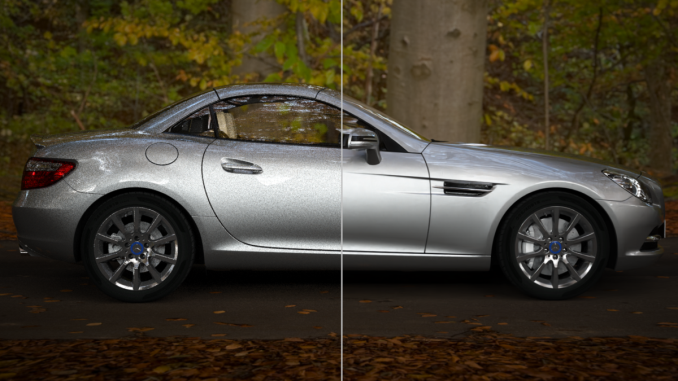
No Denoising vs. Denoising in Raytracing
The denoising filter itself is essentially an image resizing filter on steroids, and can (usually) produce a similar quality image as brute force ray tracing by algorithmically guessing what details should be present among the noise. However getting it to perform well means that it needs to be trained, and thus it’s not a generic solution. Rather developers need to take part in the process, training a neural network based on high quality fully rendered images from their game.
Overall there are 8 tensor cores in every SM, so like the RT cores, they are tightly coupled with NVIDIA’s individual processor blocks. Furthermore this means tensor performance scales down with smaller GPUs (smaller SM counts) very well. So NVIDIA always has the same ratio of tensor cores to RT cores to handle what the RT cores coarsely spit out.
Deep Learning Super Sampling (DLSS)
Now with all of that said, unlike the RT cores, the tensor cores are not fixed function hardware in a traditional sense. They’re quite rigid in their abilities, but they are programmable none the less. And for their part, NVIDIA wants to see just how many different fields/tasks that they can apply their extensive neural network and AI hardware to.
Games of course don’t fall under the umbrella of traditional neural network tasks, as these networks lean towards consuming and analyzing images rather than creating them. None the less, along with denoising the output of their RT cores, NVIDIA’s other big gaming use case for their tensor cores is what they’re calling Deep Learning Super Sampling (DLSS).
DLSS follows the same principle as denoising – how can post-processing be used to clean up an image – but rather than removing noise, it’s about restoring detail. Specifically, how to approximate the image quality benefits of anti-aliasing – itself a roundabout way of rendering at a higher resolution – without the high cost of actually doing the work. When all goes right, according to NVIDIA the result is an image comparable to an anti-aliased image without the high cost.
Under the hood, the way this works is up to the developers, in part because they’re deciding how much work they want to do with regular rendering versus DLSS upscaling. In the standard mode, DLSS renders at a lower input sample count – typically 2x less but may depend on the game – and then infers a result, which at target resolution is similar quality to a Temporal Anti-Aliasing (TAA) result. A DLSS 2X mode exists, where the input is rendered at the final target resolution and then combined with a larger DLSS network. TAA is arguably not a very high bar to set – it’s also a hack of sorts that seeks to avoid doing real overdrawing in favor of post-processing – however NVIDIA is setting out to resolve some of TAA’s traditional inadequacies with DLSS, particularly blurring.
Now it should be noted that DLSS has to be trained per-game; it isn’t a one-size-fits all solution. This is done in order to apply a unique neutral network that’s appropriate for the game at-hand. In this case the neural networks are trained using 64x SSAA images, giving the networks a very high quality baseline to work against.
None the less, of NVIDIA’s two major gaming use cases for the tensor cores, DLSS is by far the more easily implemented. Developers need only to do some basic work to add NVIDIA’s NGX API calls to a game – essentially adding DLSS as a post-processing stage – and NVIDIA will do the rest as far as neural network training is concerned. So DLSS support will be coming out of the gate very quickly, while raytracing (and especially meaningful raytracing) utilization will take much longer.
In sum, then the upcoming game support aligns with the following table.
| Planned NVIDIA Turing Feature Support for Games | |||||
| Game | Real Time Raytracing | Deep Learning Supersampling (DLSS) | Turing Advanced Shading | ||
| Ark: Survival Evolved | Yes | ||||
| Assetto Corsa Competizione | Yes | ||||
| Atomic Heart | Yes | Yes | |||
| Battlefield V | Yes | ||||
| Control | Yes | ||||
| Dauntless | Yes | ||||
| Darksiders III | Yes | ||||
| Deliver Us The Moon: Fortuna | Yes | ||||
| Enlisted | Yes | ||||
| Fear The Wolves | Yes | ||||
| Final Fantasy XV | Yes | ||||
| Fractured Lands | Yes | ||||
| Hellblade: Senua's Sacrifice | Yes | ||||
| Hitman 2 | Yes | ||||
| In Death | Yes | ||||
| Islands of Nyne | Yes | ||||
| Justice | Yes | Yes | |||
| JX3 | Yes | Yes | |||
| KINETIK | Yes | ||||
| MechWarrior 5: Mercenaries | Yes | Yes | |||
| Metro Exodus | Yes | ||||
| Outpost Zero | Yes | ||||
| Overkill's The Walking Dead | Yes | ||||
| PlayerUnknown Battlegrounds | Yes | ||||
| ProjectDH | Yes | ||||
| Remnant: From the Ashes | Yes | ||||
| SCUM | Yes | ||||
| Serious Sam 4: Planet Badass | Yes | ||||
| Shadow of the Tomb Raider | Yes | ||||
| Stormdivers | Yes | ||||
| The Forge Arena | Yes | ||||
| We Happy Few | Yes | ||||
| Wolfenstein II | Yes | ||||


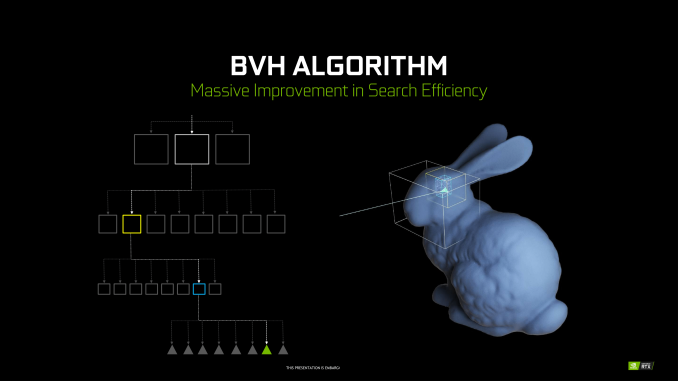
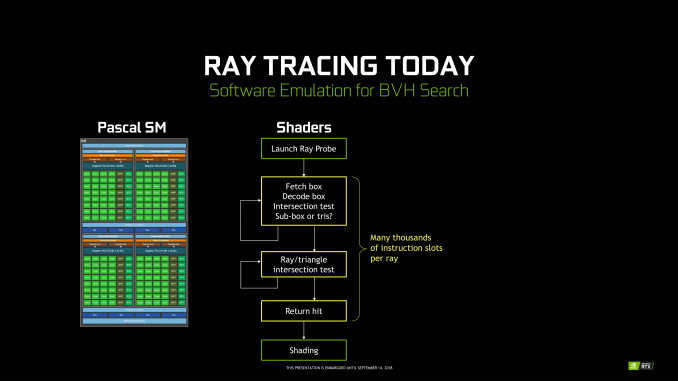
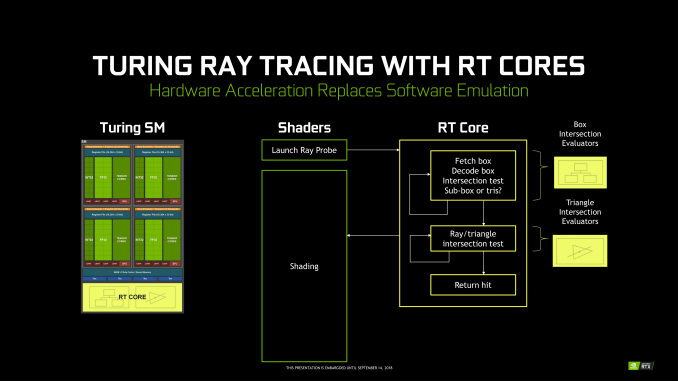
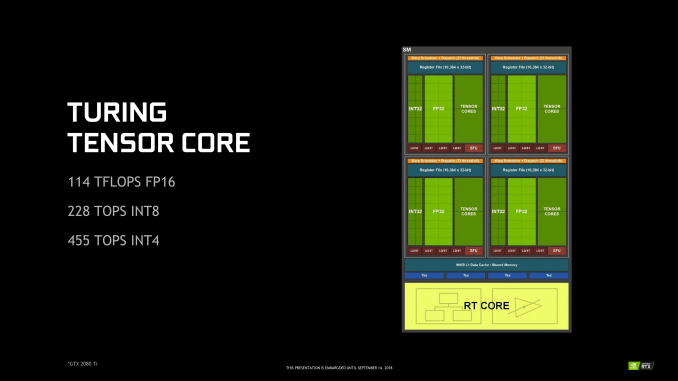
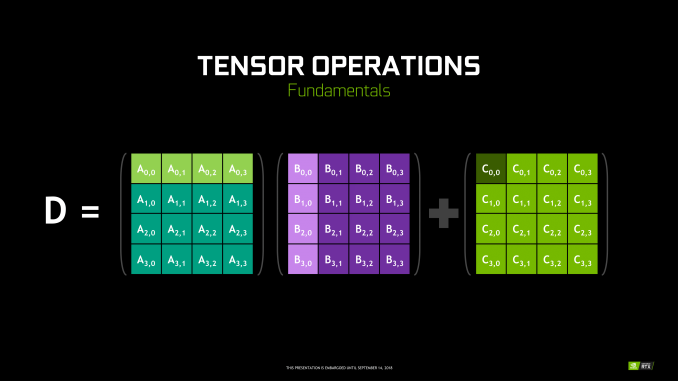
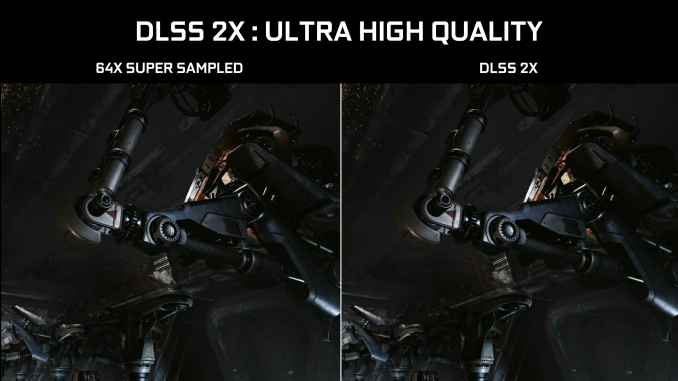








337 Comments
View All Comments
nevcairiel - Thursday, September 20, 2018 - link
Technically AMD would have to hit a 70-80% advancement at least once over their own cards at least if they ever want to offer high-end cards again.Arbie - Thursday, September 20, 2018 - link
Why gratuitously characterize all those complaining of price as "AMD fanboys"? Obviously, most are those who intended to buy the new NVidia boards but are dismayed to find them so costly! Hardly AMD disciples.Your repeated, needless digs mark you as the fanboy. And do nothing to promote your otherwise reasonable statements.
eddman - Thursday, September 20, 2018 - link
I'm such an AMD fanboy that I have a 1060 and have never owned an AMD product. You, on the other hand, reek of pro nvidia bias.A 40% higher launch MSRP is not "how it always works out".
No one is complaining about the performance itself but the horrible price/performance increase, or should I say decrease, compared to pascal.
Moore's law? 980 Ti was made on the same 28nm process as 780 Ti and yet offered considerably higher performance and still launched at a LOWER MSRP, $650 vs. $700.
Inteli - Saturday, September 22, 2018 - link
Got enough straw for that strawman you're building? The last 3 GPUs I've bought have been Nvidia (970, 1060, 1070 Ti). I would have considered a Vega 56, but the price wasn't low enough that I was willing to buy one.News flash: in current games, the 2080 is tied with the 1080 Ti for the same MSRP (and the 1080 Ti will be cheaper with the new generation launches). Sure, if you compare the 1080 to the 2080, the 2080 is significantly faster, but those only occupy the same position in Nvidia's product stack, not in the market. No consumer is going to compare a $500 card to a $700-800 card.
The issues people take with the Turing launch have absolutely nothing to do with either "We only got a 40% perf increase" or "Nvidia raised the prices" in isolation. Every single complaint I've seen is "Turing doesn't perform any better in current games as an equivalently priced Pascal card".
Lots of consumers are pragmatists, and will buy the best performing card they can afford. These are the people complaining about (or more accurately disappointed by) Turing's launch: Turing doesn't do anything for them. Sure, Nvidia increased the performance of the -80 and -80 Ti cards compared to last generation, but they increased the price as well, so price/performance is either the same or worse compared to Pascal. Many people were holding off on buying new cards until this launch, and in return for their patience they got...the same performance as before.
mapesdhs - Wednesday, September 26, 2018 - link
Where I live (UK), the 2080 is 100 UKP more expensive than a new 1080 Ti from normal retail sources, while a used 1080 Ti is even less. The 2080 is not worth it, especially with less RAM. It wouldn't have been quite so bad if the 2080 was the same speed for less cost, but being more expensive just makes it look silly. Likewise, if the 2080 Ti had had 16GB that would at least have been something to distinguish it from the 1080 Ti, but as it stands, the extra performance is meh, especially for the enormous cost (literally 100% more where I am).escksu - Thursday, September 20, 2018 - link
Lol.....most important??If you think that ray tracing on 2080ti is damm cool and game changer.....You should see what AMD has done. Just that no one really care about it back then.....
https://forums.geforce.com/default/topic/437987/th...
Even more incredible is that this was done 10yrs ago on 4870x2....REAL TIME......Yes, I repeat, REAL TIME.......
nevcairiel - Thursday, September 20, 2018 - link
It was just another "rasterization cheat" though, may have looked nice but ultimately didn't have the longevity that Ray Tracing may have. No 3D developer or 3D artist is going to ever argue that Ray Tracing is not the future, the question is just how to get there.V900 - Thursday, September 20, 2018 - link
Meh... The image itself is captured by cameras, it’s the manipulation of it that’s done in real time.Which is of course a neat little trick; and while it looks good, it’s hardly as impressive and computationally demanding as creating a whole image through raytracing.
escksu - Thursday, September 20, 2018 - link
https://www.cinemablend.com/games/DirectX-11-Ray-T...AMD did that again with 5870.... REAL TIME......but nobody cares........because the world only bothers about Nvidia.........
Chawitsch - Thursday, September 20, 2018 - link
The demos you linked to are beautiful indeed, however both the ATi Ruby demo and Rigid Gems demo use standard DirectX feature from those times, no ray tracing at all or any vendor specific features. Due to the latter it is worth pointing out that the 2008 Ruby demo (called Double Cross IIRC) was perfectly happy to run on nVidia cards of the time.If these demos show anything, it is that there were and are extremely talented artists out there who can do amazing things to work around the limitations of rasterization. This way however we can always merely approximate how a scene should look, with increasingly high costs, so going back to proper ray tracing was only a question of when its costs will approach that of rasterization. We seem to have arrived at the balancing point, hence hybrid rendering. I also think if AMD could have pushed nVidia more with high end GPUs, nVidia may not have made this step at this time, at least it certainly could have been a more risky proposition otherwise.